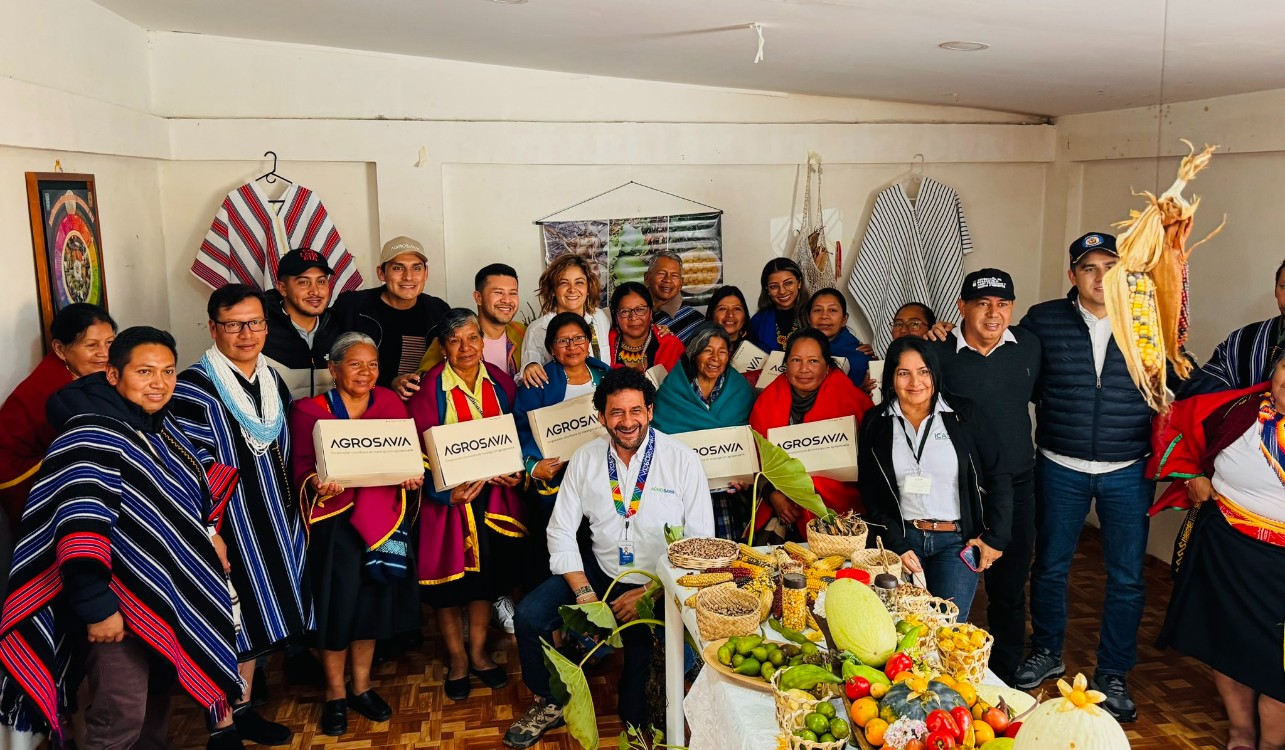- Ten varieties of this cereal that were considered lost returned to the indigenous territory of the region after a research process carried out by AGROSAVIA.
Sibundoy, Putumayo. May 31, 2024. (@SomosAGROSAVIA @MinAgricultura). In a ceremony at the Kamëntsá Cabildo (Municipal Council), the Minister of Agriculture and Rural Development, Jhenifer Mojica, and the Director of Corporación colombiana de investigación agropecuaria - AGROSAVIA, Jorge Mario Díaz, led the "rematriation" of seeds from ten maize species that were considered lost by this indigenous community that lives in Alto Putumayo.
The return of these varieties, which contribute to strengthening the territory's agri-food systems, occurred as part of Territorial Innovation Systems processes that articulate all rural actors to boost agricultural capacities.
In these dialogues, leaders pointed out that ancestral maize varieties considered of high socioeconomic value for the Kamëntsá had been lost in the region. What followed was work led by the Ministry of Agriculture and launched by AGROSAVIA, in which seeds of these species were traced to be under the custody of the Nation's Germplasm Bank.
After the seed delivery ceremony, Minister Jhenifer Mojica pointed out, "We believe in you absolutely because it is from here that maize-based nutrition will be ensured. Without maize, no human population will be able to survive. We are convinced that the communities' agriculture will feed Colombia and the world by producing healthy, organic foods, like those that come from here, without chemicals, that do not deforest, that take care of the rivers."
According to the Nation's Germplasm Bank records, the native species of Sibundoy were conserved for approximately four decades. After identifying the material, the best way to return it was agreed upon with the community, and it was concluded that the best way to do so was to obtain more seeds from a harvest that began in November of last year and ended at the beginning of May 2024. During this period, AGROSAVIA's Seed Department experts monitored the plantation 24-7 to obtain quality seeds to deliver in the territory.
For the director of AGROSAVIA, Jorge Mario Díaz Luengas, this act "is a process that aims to restore the rights that indigenous peoples have to conserve their agrobiodiversity, empowering them to conserve and preserve their own identity and recover the memory related to the agrobiodiversity of the Territory and is part of the National Agrarian Reform System through the dialogue of knowledge with the country's native peoples."
The result is two kilos of each of the ten varieties obtained, and these remain in the hands of seed guardians, who will be tasked with preserving and guarding these grains so that future generations can guarantee their continuity.
- More information here:
- Ivan David Alba Hidalgo
- Communications, Identity and Corporate Relations Professional
- Headquarters
- Communications, Identity and Corporate Relations Advisory Office
- ialba@agrosavia.co
- AGROSAVIA





